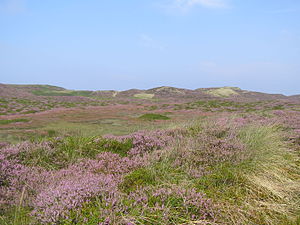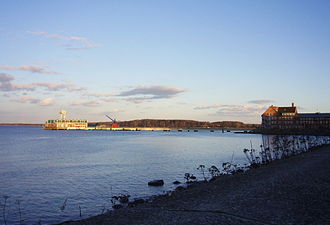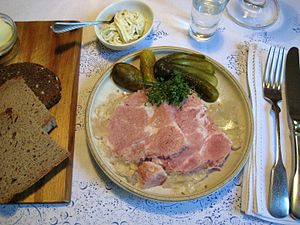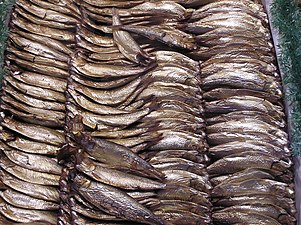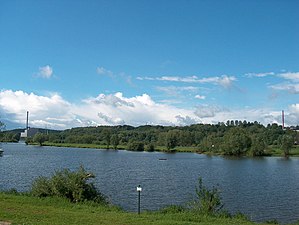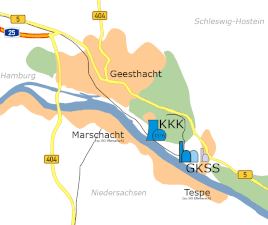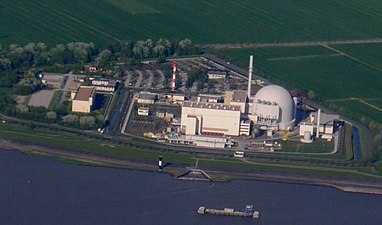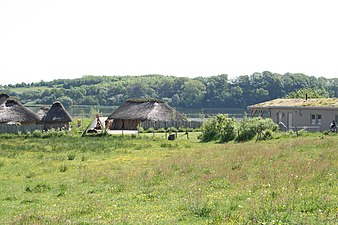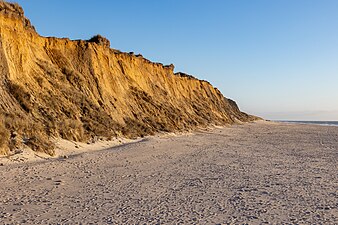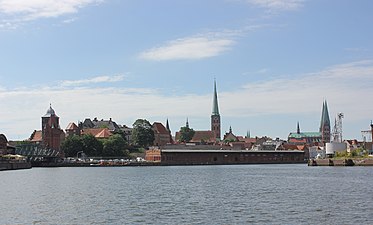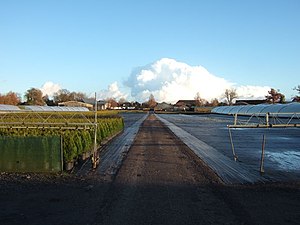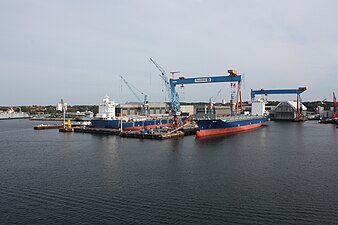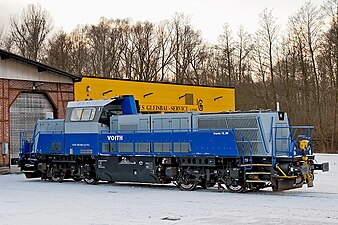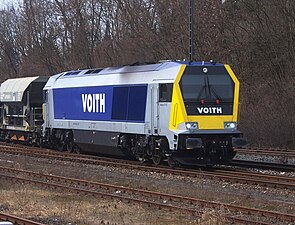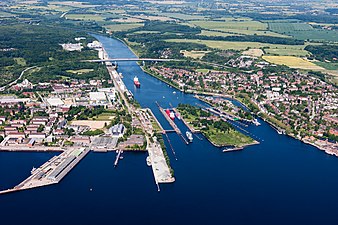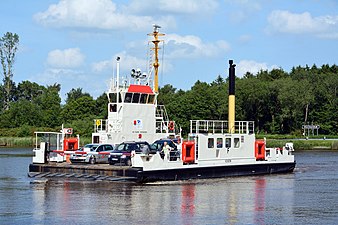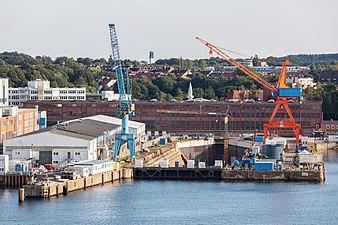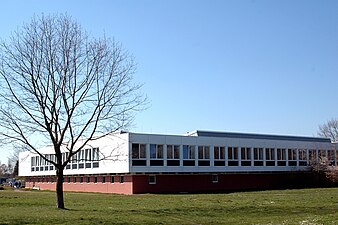Schleswig-Holstein
- Acèh
- Afrikaans
- Alemannisch
- አማርኛ
- Ænglisc
- العربية
- Aragonés
- Asturianu
- Avañe'ẽ
- Aymar aru
- Azərbaycanca
- تۆرکجه
- Basa Bali
- বাংলা
- Bân-lâm-gú
- Беларуская
- Беларуская (тарашкевіца)
- Български
- Boarisch
- Bosanski
- Brezhoneg
- Català
- Чӑвашла
- Cebuano
- Čeština
- Cymraeg
- Dansk
- Davvisámegiella
- Deutsch
- Dolnoserbski
- Eesti
- Ελληνικά
- Emiliàn e rumagnòl
- Español
- Esperanto
- Euskara
- فارسی
- Føroyskt
- Français
- Frysk
- Gaeilge
- Gaelg
- Gàidhlig
- Galego
- گیلکی
- 客家語/Hak-kâ-ngî
- 한국어
- Հայերեն
- हिन्दी
- Hornjoserbsce
- Hrvatski
- Ido
- Bahasa Indonesia
- Interlingua
- Interlingue
- Ирон
- Íslenska
- Italiano
- עברית
- Jawa
- Kapampangan
- ქართული
- Қазақша
- Kernowek
- Kiswahili
- Kongo
- Kurdî
- Ladin
- Ladino
- Latina
- Latviešu
- Lëtzebuergesch
- Lietuvių
- Ligure
- Limburgs
- Lingua Franca Nova
- Lombard
- Magyar
- Македонски
- മലയാളം
- मराठी
- მარგალური
- مصرى
- مازِرونی
- Bahasa Melayu
- Монгол
- Nederlands
- Nedersaksies
- नेपाली
- 日本語
- Нохчийн
- Nordfriisk
- Norsk bokmål
- Norsk nynorsk
- Novial
- Occitan
- Oʻzbekcha / ўзбекча
- Pälzisch
- پنجابی
- Papiamentu
- پښتو
- Piemontèis
- Plattdüütsch
- Polski
- Português
- Qaraqalpaqsha
- Qırımtatarca
- Ripoarisch
- Română
- Rumantsch
- Runa Simi
- Русский
- Sardu
- Scots
- Seeltersk
- Shqip
- Simple English
- سنڌي
- Slovenčina
- Slovenščina
- کوردی
- Српски / srpski
- Srpskohrvatski / српскохрватски
- Suomi
- Svenska
- Tagalog
- Татарча / tatarça
- ไทย
- Тоҷикӣ
- Türkçe
- Українська
- اردو
- Vèneto
- Tiếng Việt
- Volapük
- West-Vlams
- Winaray
- 吴语
- ייִדיש
- Yorùbá
- 粵語
- Zazaki
- 中文
Schleswig-Holstein
Slesvig-Holsten ( | ||
|---|---|---|
|
NUTS Region DEF | | |
| HDI (2018) | 0.924[4] very high · 13th of 16 | |
| Website | schleswig-holstein.de | |
Schleswig-Holstein (pronounced
Historically, the name can also refer to a larger region, containing both present-day Schleswig-Holstein and the former South Jutland County (Northern Schleswig; now part of the Region of Southern Denmark) in Denmark.
Schleswig was under Danish control during the
Today, Schleswig-Holstein's economy is known for its agriculture, such as its
History
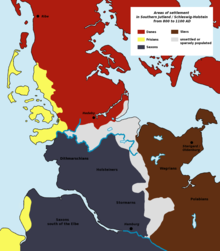
The term "Schleswig" originally referred to the city of Schleswig. The city's name derives from Schlei "inlet" in the east and vik, which meant inlet in Old Norse and settlement in Old Saxon, and is cognate with the "-wick" and "-wich" elements in place-names in Britain.
The
Duchies in the Danish realm
Schleswig and Holstein have at different times belonged in part or completely to either Denmark or Germany, or have been virtually independent of both nations. Schleswig was never part of Germany until after the Second Schleswig War in 1864. But for many centuries, the king of Denmark was both a Danish Duke of Schleswig and a German Duke of Holstein. Essentially, Schleswig was either integrated into Denmark or was a Danish fief, and Holstein was a German fief and once, long before that, a sovereign state. Both were ruled for several centuries by the kings of Denmark. In 1721, all of Schleswig was united into a single duchy under the king of Denmark, and the great powers of Europe confirmed in an international treaty that all future kings of Denmark should automatically become dukes of Schleswig: consequently, Schleswig would always follow the order of succession that applied in the Kingdom of Denmark. Government business in both duchies was conducted in the German language, even though for a long time they were governed from Copenhagen. (Beginning in 1523, however, they were governed by the German Chancellery, which in 1806 was renamed the Schleswig-Holstein Chancellery). After the Protestant Reformation, church services were conducted in German in the southern part of Schleswig, and in Danish in the northern part. This difference would later contribute strongly to shaping the inhabitants' national sentiments, as would the different languages spoken in different schools after 1814, when mandatory schooling was instituted.
Schleswig-Holstein Question
A liberal constitution for Holstein was not seriously considered in Copenhagen, since it was well known that the political élite of Holstein were more conservative than Copenhagen's. Representatives of German-minded Schleswig-Holsteiners demanded that Schleswig and Holstein be unified and allowed its own constitution and that Schleswig join Holstein as a member of the German Confederation. These demands were rejected by the Danish government in 1848, and the Germans of Holstein and Southern Schleswig rebelled. This began the First Schleswig War (1848–51), which ended in a Danish victory at Idstedt.
In 1863, conflict broke out again when Frederick VII died without legitimate issue. According to the
Province of Prussia
Contrary to the hopes of German Schleswig-Holsteiners, the area did not gain its independence, but was annexed as a province of Prussia in 1867. Also following the Austro-Prussian War in 1866, section five of the Peace of Prague stipulated that the people of Northern Schleswig would be consulted in a referendum on whether to remain under Prussian rule or return to Danish rule. This condition, however, was never fulfilled by Prussia. During the decades of Prussian rule within the German Empire, authorities attempted a Germanisation policy in the northern part of Schleswig, which remained predominantly Danish. The period also meant increased industrialisation of Schleswig-Holstein and the use of Kiel and Flensburg as important Imperial German Navy locations. The northernmost part and west coast of the province saw a wave of emigration to America, while some Danes of North Schleswig emigrated to Denmark.
Plebiscite in 1920
Following the defeat of Germany in
In zone I covering Northern Schleswig (10 February 1920), 75% voted for reunification with Denmark and 25% voted for Germany. In zone II covering central Schleswig (14 March 1920), the results were reversed; 80% voted for Germany and just 20% for Denmark. Only minor areas on the island of Föhr showed a Danish majority, and the rest of the Danish vote was primarily in the town of Flensburg.[5]

| Electorate | German name | Danish name | For Germany | For Denmark | ||
| percent | votes | percent | votes | |||
| Zone I (Northern Schleswig), 10 February 1920 | 25.1 % | 25,329 | 74.9 % | 75,431 | ||
| District of | Hadersleben | Haderslev | 16.0% | 6,585 | 84.0% | 34,653 |
| Town of | Hadersleben | Haderslev | 38.6% | 3,275 | 61.4% | 5,209 |
| District of | Apenrade | Aabenraa | 32.3% | 6,030 | 67.7% | 12,653 |
| Town of | Apenrade | Aabenraa | 55.1% | 2,725 | 44.9% | 2,224 |
| District of | Sonderburg | Sønderborg | 22.9% | 5,083 | 77.1% | 17,100 |
| Town of | Sonderburg | Sønderborg | 56.2% | 2,601 | 43.8% | 2,029 |
| Town of | Augustenburg | Augustenborg | 48.0% | 236 | 52.0% | 256 |
| Northern part of District of | Tondern | Tønder | 40.9% | 7,083 | 59.1% | 10,223 |
| Town of | Tondern | Tønder | 76.5% | 2,448 | 23.5% | 750 |
| Town of | Hoyer | Højer | 72.6% | 581 | 27.4% | 219 |
| Town of | Lügumkloster | Løgumkloster | 48.8% | 516 | 51.2% | 542 |
| Northern part of District of | Flensburg | Flensborg | 40.6% | 548 | 59.4% | 802 |
| Zone II (Central Schleswig), 14 March 1920 | 80.2 % | 51,742 | 19.8 % | 12,800 | ||
| Southern part of District of | Tondern | Tønder | 87.9% | 17,283 | 12.1% | 2,376 |
| Southern part of District of | Flensburg | Flensborg | 82.6% | 6,688 | 17.4% | 1,405 |
| Town of | Flensburg | Flensborg | 75.2% | 27,081 | 24.8% | 8,944 |
| Northern part of District of | Husum | Husum | 90.0% | 672 | 10.0% | 75 |
On 15 June 1920, Northern Schleswig officially returned to Danish rule. The Danish/German border was the only one of the borders imposed on Germany by the Treaty of Versailles after World War I that was never challenged by Adolf Hitler.
In 1937, the Nazis passed the so-called Greater Hamburg Act (Groß-Hamburg-Gesetz), where the nearby Free and Hanseatic City of Hamburg was expanded, to encompass towns that had formerly belonged to the Prussian province of Schleswig-Holstein. To compensate Prussia for these losses (and partly because Hitler had a personal dislike for Lübeck[6]), the 711-year-long independence of the Hansestadt Lübeck came to an end, and almost all its territory was incorporated into Schleswig-Holstein.

State of Federal Germany
After World War II, the Prussian province Schleswig-Holstein came under British occupation. On 23 August 1946, the military government abolished the province and reconstituted it as a separate Land.[7]
Due to the forced migrations of Germans between 1944 and 1950, Schleswig-Holstein took in almost a million refugees after the war, increasing its population by 33%.[8] A pro-Danish political movement arose in Schleswig, with transfer of the area to Denmark as an ultimate goal. This was supported neither by the British occupation administration nor the Danish government. In 1955, the German and Danish governments issued the Bonn-Copenhagen Declarations confirming the rights of the ethnic minorities on both sides of the border.[9] Conditions between the nationalities have since been stable and generally respectful.
Geography
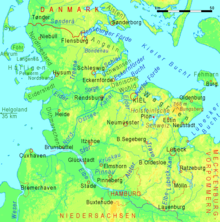
Schleswig-Holstein lies on the base of
Schleswig-Holstein borders Denmark (Southern Denmark) to the north, the North Sea to the west, the Baltic Sea to the east, and the German states of Lower Saxony, Hamburg, and Mecklenburg-Vorpommern to the south.
In the western part of the state, the lowlands have virtually no hills. The North Frisian Islands, as well as almost all of Schleswig-Holstein's North Sea coast, form the Schleswig-Holstein Wadden Sea National Park (Nationalpark Schleswig-Holsteinisches Wattenmeer) which is the largest national park in Central Europe.
The Baltic Sea coast in the east of Schleswig-Holstein is marked by bays, fjords, and cliff lines. Rolling hills (the highest elevation is the Bungsberg at 168 metres or 551 feet) and many lakes are found, especially in the eastern part of Holstein called the Holstein Switzerland and the former Duchy of Lauenburg (Herzogtum Lauenburg). The longest river besides the Elbe is the Eider.
Schleswig-Holstein has the lowest quota of forest covered area, it is only 11.0% (national average 32.0%), which is even lower than in the city-states of Hamburg and Bremen.[10]
The German Islands of Sylt, Föhr, Pellworm, Amrum, Heligoland and Fehmarn are part of Schleswig-Holstein, with the latter being the largest and the only Island of Schleswig-Holstein located on the east coast.[11] Heligoland is Germany's only high-sea island.[11]
-
Geest (Island Sylt)
-
Seestermüher Marsh
-
Eckernförde Bay
-
Wadden Sea
-
Schleswig-Holsteinische Schweiz
-
Kieler Förde
Administration
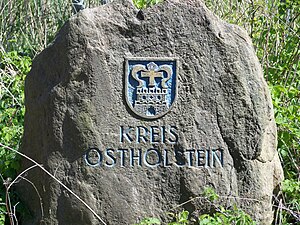

Administrative Division
Schleswig-Holstein is divided into 11
Legislature
Schleswig-Holstein has its own parliament and government which are located in the state capital Kiel.[14]
Executive Branch
The
| Portfolio | Minister | Party | Took office | Left office | State secretaries | ||
|---|---|---|---|---|---|---|---|
Minister-President
|
 |
Daniel Günther born (1973-07-24) 24 July 1973 (age 50) |
CDU | 29 June 2022 | Incumbent | ||
| Deputy Minister-President Minister for Finance |
 |
Monika Heinold born (1958-12-30) 30 December 1958 (age 65) |
GRÜNE | 29 June 2022 | Incumbent |
| |
| Minister for Justice and Health | Kerstin von der Decken born (1968-11-22) 22 November 1968 (age 55) |
CDU | 29 June 2022 | Incumbent |
| ||
| Minister for Education, Training, Science, Research and Culture | Karin Prien born (1965-06-26) 26 June 1965 (age 58) |
CDU | 29 June 2022 | Incumbent |
| ||
| Minister for Interior, Communities, Housing and Sport |  |
Sabine Sütterlin-Waack born (1958-02-15) 15 February 1958 (age 66) |
CDU | 29 June 2022 | Incumbent |
| |
| Minister for Energy Transition, Climate Protection, Environment and Nature | Tobias Goldschmidt born (1981-09-16) 16 September 1981 (age 42) |
GRÜNE | 29 June 2022 | Incumbent |
| ||
| Minister for Economics, Transport, Labour, Technology and Tourism | 
|
Claus Ruhe Madsen born (1972-08-27) 27 August 1972 (age 51) |
CDU | 29 June 2022 | Incumbent |
| |
| Minister for Social Affairs, Youth, Family, Seniors, Integration and Equality | 
|
Aminata Touré born (1992-11-15) 15 November 1992 (age 31) |
GRÜNE | 29 June 2022 | Incumbent |
| |
| Minister for Agriculture, Rural Areas, Europe and Consumer Protection | Werner Schwarz born (1960-04-10) 10 April 1960 (age 64) |
CDU | 29 June 2022 | Incumbent |
| ||
| Chief of the State Chancellery | Dirk Schrödter born (1978-10-17) 17 October 1978 (age 45) |
CDU | 29 June 2022 | Incumbent |
| ||
Recent elections
State elections were held on
List of minister-presidents of Schleswig-Holstein
Demographics
| Year | Pop. | ±% p.a. |
|---|---|---|
| 1960 | 2,309,409 | — |
| 1970 | 2,510,608 | +0.84% |
| 1980 | 2,611,285 | +0.39% |
| 1990 | 2,626,127 | +0.06% |
| 2000 | 2,789,761 | +0.61% |
| 2010 | 2,834,259 | +0.16% |
| 2018 | 2,896,900 | +0.27% |
| source:[15] | ||
Schleswig-Holstein has an aging population. Since 1972 there has been a decrease in the natural rate of population change. In 2016 the total fertility rate reached 1.61, highest value in 40 years (the average value being 1.4). In 2016 there were 25,420 births and 33,879 deaths, resulting in a natural decrease of −8,459.
| Fluctuations 1970–2015 | |||||||||||||||||||||||||||||||||||||||||||||||||||||||||||||||||||||||||||||
|---|---|---|---|---|---|---|---|---|---|---|---|---|---|---|---|---|---|---|---|---|---|---|---|---|---|---|---|---|---|---|---|---|---|---|---|---|---|---|---|---|---|---|---|---|---|---|---|---|---|---|---|---|---|---|---|---|---|---|---|---|---|---|---|---|---|---|---|---|---|---|---|---|---|---|---|---|---|
|
Vital statistics
- Births from January–September 2016 =
 19,138[16]
19,138[16] - Births from January–September 2017 =
 19,086
19,086 - Deaths from January–September 2016 =
 25,153
25,153 - Deaths from January–September 2017 =
 25,832
25,832 - Natural growth from January–September 2016 =
 -6,015
-6,015 - Natural growth from January–September 2017 =
 -6,746
-6,746
Religion
| Religion in Schleswig-Holstein – 2011 | ||||
|---|---|---|---|---|
| religion | percent | |||
| EKD Protestants | 53% | |||
Roman Catholics |
6% | |||
| Muslims | 3% | |||
| Other or none | 38% | |||
The region has been strongly
49.3% either adhere to other religions or disclaim any practising religious identity.[17]
Foreigners
Largest groups of foreign residents by 31 December 2022[citation needed]
| 38,785 | |
| 32,470 | |
| 29,785 | |
| 28,395 | |
| 20,255 | |
| 18,285 | |
| 12,395 | |
| 10,470 | |
| 8,240 | |
| 7,365 | |
| 5,875 |
Culture
This section needs additional citations for verification. Please help improve this article by adding citations to reliable sources in this section. Unsourced material may be challenged and removed. Find sources: "Schleswig-Holstein" – news · newspapers · books · scholar · JSTOR (August 2022) (Learn how and when to remove this template message) |
Schleswig-Holstein combines Danish, Frisian and German aspects of culture. The castles and manors in the countryside are the best example for this tradition; some dishes like
The most important festivals are the Kiel Week, Schleswig-Holstein Musik Festival, an annual classic music festival all over the state, and the Lübeck Nordic Film Days, an annual film festival for movies from Scandinavian countries, held in Lübeck. The Kiel Week is an annual event, except for 2020 and 2021 due to the COVID19-Pandemic.[18] It took place again in June 2022.[18]
The annual Wacken Open Air festival is considered to be the largest heavy metal rock festival in the world.
-
Kiel Week 2019
-
Wacken Open Air Festival
-
Kiel Week 2019
Symbols
The coat of arms shows the symbols of the two duchies united in Schleswig-Holstein, i.e., the two lions for Schleswig and the leaf of nettle for Holstein. Supposedly, Otto von Bismarck decreed that the two lions were to face the nettle because of the discomfort to their bottoms which would have resulted if the lions faced away from it.
Government agencies of Schleswig-Holsteins are using a logo showing a stylized version of the Schleswig Lions and the Holstein nettle combined with the abbreviation of Schleswig-Holstein "SH". Written either below or to the right of the lion and the nettle is "Schleswig-Holstein" below which either the Name of the agency using the logo is shown or the motto "Der echte Norden" (Germany's true North).[19]

The motto of Schleswig-Holstein is "Up ewich ungedeelt" (
The anthem from 1844 is called "Wanke nicht, mein Vaterland" ("Don't falter, my fatherland"), but it is usually referred to with its first line "Schleswig-Holstein meerumschlungen" (i.e., "Schleswig-Holstein embraced by the seas") or "Schleswig-Holstein-Lied" (Schleswig-Holstein song).
The old city of Lübeck is a UNESCO World Heritage Site.
Food and drink
Distinctive point of the cuisine is combination of sweetness with a taste contrast like sour or salty. These combinations are also described as "broken sweetness" is especially present in dishes which are sweet-sour.
Typical dishes are:
- Birnen, Bohnen und Speck consist of pears, beans, savory, parsley, bacon and potatoes
- Holsteiner Sauerfleisch is sour aspic
- Holsteiner Katenschinken is ham with traditional cold-smoking method
- Different using of Nordseekraben in soup, porrenpann, with toast or scrambled eggs
- Famous is smoked Kieler Sprotten
- Other fish also is popular: Flatfish or Herring
- Grünkohl. In the Schleswig-Holstein there is a real cult around this vegetable. In the autumn and winter months groups of friends or colleagues go on a cabbage ride and choose their cabbage king, often combined with the typical regional sports of Boßeln and Klootschießen. The most popular dish is Grünkohl with Mettenden, but also possible other combination like Grünkohl with Kassler and 'Schweinebacke'. The Dithmarsch marshland is particularly suitable for growing cabbage. The soils are fertile, so that a good yield can still be achieved even in bad years. Due to the constant sea wind, there are far fewer pests in the area
- Lübecker Marzipanis a sweet made from ground almonds, sugar and added flavorings
- Lakritz confection flavored with extract of the roots of the liquorice plant (sweet, salt, salmiak and choco)
- Lübecker Rotspon, Bordeaux wine, which is delivered in oak barrels to Lübeck and there it maturated.
- Flensburger Rum-Verschnitt, braun mix of oversea rum, water and neutral alcohol (typical 40–42%)
-
Shrimp toast with dill
-
Holsteiner Sauerfleisch
-
Holsteiner Katenschinken
-
Kieler Sprotten
-
Birnen, Bohnen und Speck
-
Grünkohl mit Mettenden
Languages
The official language of Schleswig-Holstein is German.[20] In addition, Low German, Danish and North Frisian are recognized minority languages.[21]
Historically, Low German (in Holstein and Southern Schleswig), Danish (in Schleswig), and North Frisian (in Western Schleswig) were widely spoken in Schleswig-Holstein. During the language change in the 19th century some Danish and North Frisian dialects in Southern Schleswig were replaced by Standard German.[22][23][24]
Low German is still used in many parts of the state.
As is the case throughout Germany, High German, introduced in the 16th century, has come to steadily replace local dialects for official purposes, and is today the predominant language of media, law and legislature. It is spoken by virtually all inhabitants in formal situations. Since the end of World War II and widespread adoption of TV, radio and other mass media, it has gradually come to supplant local dialects in urban areas as well.
Economy

The Gross domestic product (GDP) of the state was 62.7 billion euros in 2018, accounting for 1.9% of German economic output. GDP per capita adjusted for purchasing power was 30,400 euros or 101% of the EU27 average in the same year. The GDP per employee was 95% of the EU average. The GDP per capita was the lowest of all states in West Germany.[25] In 2017, Schleswig-Holstein had an export surplus for the first time since 1989: export 22.6 billion euros/ import 20.8 billion euros.
Energy
Schleswig-Holstein is a leader in the country's growing renewable energy industry.[26] In 2014, Schleswig-Holstein became the first German state to cover 100% of its electric power demand with renewable energy sources (chiefly wind 70%, solar 3.8%, and biomass 8.3%).[27]
The largest German oil field Mittelplate is located in the North Sea off the Dithmarsch coast and connected with refinery in Hemmingstedt and chemical plants in Brunsbüttel via pipeline. It produce ca. 1.4 million tonnes of oil annually.
Nuclear power
There were three nuclear power plants in Schleswig-Holstein: Krümmel, Brunsbüttel, and Brockdorf. The last operating plant in Schleswig-Holstein, the Brokdorf-plant was shut down on new-years eve 2021.[28]
There is also a nuclear research center known "Helmholtz-Zentrum Geesthacht" (rebranded as Hereon) with 2 research reactors, located right next to the Krümmel plant.[29]
During the 1990s, ten more cases of leukemia among children than was expected were identified in Elbmarsch, near the Krümmel plant. Anti-nuclear activists believed it was due to the nuclear plant, which led to several investigations. The reported discovery of small spherical beads of nuclear material in the area led to further concern, as well as the presence of minute amounts of plutonium in the Elbe. The origins of the nuclear material were disputed, with one report determining them to not be that of the Krümmel plant. Another report claimed that they may have come from an undisclosed fire in 1986, however this theory has been questioned as it would have required a substantial government coverup. The Chernobyl disaster has also been suggested as a source, though is considered unlikely. The probable source of the material, especially in the Elbe, is nuclear reprocessing plants in France. A 2010 report exonerated the nuclear power plants on the Elbe as the cause of contamination. Further doubt was cast on the nature of the supposed beads of nuclear material, with a Federal commission chastising the original commission that claimed to have discovered the beads. The exact cause of the increased leukemia cases remains unknown, and could be due to other environmental factors, or even by chance.[30][31][32][33][34]
The nuclear plants have further been questioned as a source of the cases due to comparison to the Savannah River Site in the United States. Despite release of radiation at the Savannah River Site, there is no increase in cases of leukemia around it. Alternative hypotheses for the cause of the cases have included electromagnetic fields, parental radiation exposure prior to conception, other carcinogens, and benzene exposure; however, none have been supported by the existing evidence. Intriguingly, a larger case-control study in Lower Saxony found a correlation between the "untrained immune system" (as judged as contact with other children, vaccinations, etc.) and leukemia risk, suggested that an immature immune system that has not been challenged is at greater risk for developing malignancy, possibly secondary to an undetermined environment factor.[35][36]
-
NPP Krümmel
-
View form Elbe: left is NPP Krümmel, right is the Research Center.
-
KKK – NPP Krümmel, GKSS – Research Center
-
Brokdorf Nuclear Power Plant
Tourism
Located between the North Sea and the Baltic Sea, Schleswig-Holstein is also a popular tourist destination in Germany. Its islands, beaches and cities attract millions of tourists every year. It has the second highest tourism intensity per local among the German states, after Mecklenburg-Vorpommern, but in absolute value it is rank 6th and only 1/3 of top destination Bavaria.[37] According to a ruling by the Federal Administrative Court, everyone has the right to free access to the beach. Nevertheless, most of the seaside resorts kept cashing in (2-€3 /day/person).[38]
-
HaithabuMuseum
-
Red Cliff (Sylt)
-
Lübeck City Hall
-
Historic City Center of Lübeck
-
Baltic Sea Coast at Timmendorfer Strand
-
Island of Heligoland
-
Kappeln Herring Day
Agriculture
63% of land in Schleswig-Holstein (990 403 ha) is used for agriculture (national average 47%).[39]
Cultivated crops:[40]
- Wheat, 208 000 ha
- Maize for silage, 176 000 ha
- Winter rapeseed, 112 000 ha
- Sugar beet, 7 500 ha
- Potatoes, 5 500 ha
There are some special cultivation regions:
- Elbmarschen, west of Hamburgfor fruits cultivation
- Ditmarschen for cabbage
- Between Mölln and Lübeck for asparagus
- Pinneberg for tree nurseries and flower garden (especially, roses of Rosen Tantau and W. Kordes' Söhne), 2 931 ha. These 2 companies have over 50% of the world cut roses market. There is a German Nurseries Museum ("Deutsches Baumschulmuseum").[40]
-
Rosa Iceberg ("World-favorite Rose", 1983) from W. Kordes' Söhne
-
Tree nursery in Pinneberg
-
Rapeseed
-
Greenhouse of Rosen Tantau
-
Rosa Apricola ("Goldenen Rose", 2005) from W. Kordes' Söhne
-
Cabbage Field
Animal husbandry

The dairy and cattle farming in connection with fodder cultivation is mainly concentrated on the marshland and the bordering Geest areas. In 2020, around 1 million cattle including 360,000 dairy cows were counted in Schleswig-Holstein, rank 4th of German states. Livestock is continuously declining.[41]
Schleswig-Holstein is home of the most productive dairy cattle:
Pig breeding is mainly found in the Schleswig-Holstein Uplands. In principle, Schleswig-Holstein is one of the regions with relatively few pigs (a total of around 1.6 million; in comparison Lower Saxony: over 8 million). Poultry and sheep are also of little importance in animal husbandry.[40]
Schleswig-Holstein had Europe's largest snake farm in Uetersen with over 600 venomous reptiles, but it closed in 2019.[42]
Fishing and Aquaculture

Total production from fishing in North and Baltic Seas was 40 780 tonnes in 2019, ca. 1/3 German production.[43]
In the Baltic Sea total production amounted to 10377 tonnes (2019), of which 5432 tonnes of sprat, 2568 tonnes of flatfish and 1190 tonnes of cod.[43]
In the North Sea the numbers were 19,487 tonnes of mussels, 3560 tonnes of North Sea shrimp, 1166 tonnes of herring and 7062 other fishes.[43]
The one important aquaculture product is mussels, 16864 tonnes.[43]
Inland fishing and aquaculture is not significant with 221 and 250 tonnes in 2019 respectively.[43]
Companies
The largest company headquarters in Schleswig-Holstein with annual sales over 1 billion euros are:
- Wholesaler Bartels-Langness, Kiel 5.3 billion €
- Conglomerate Possehl, Lübeck 3.8 billion €
- Medical equipment manufacturer Drägerwerke, Lübeck 3.4 billion €
- Telecommunication service provider Freenet, Büdelsdorf 2.9 billion €
- Oil refinery Heide, Hemmingstedt 2.4 billion €
- Submarine shipyards ThyssenKrupp Marine Systems, Kiel 1.8 billion €
- Drainage and water solutions ACO Group, Büdelsdorf1 billion €
The unemployment rate stood at 5.0% in October 2021.[44]
| Year[45] | 2000 | 2001 | 2002 | 2003 | 2004 | 2005 | 2006 | 2007 | 2008 | 2009 | 2010 | 2011 | 2012 | 2013 | 2014 | 2015 | 2016 | 2017 | 2018 | 2019 |
|---|---|---|---|---|---|---|---|---|---|---|---|---|---|---|---|---|---|---|---|---|
| Unemployment rate in % | 8.5 | 8.4 | 8.7 | 9.7 | 9.8 | 11.6 | 10.0 | 8.4 | 7.6 | 7.8 | 7.5 | 7.2 | 6.9 | 6.9 | 6.8 | 6.5 | 6.3 | 6.0 | 5.5 | 5.1 |
Industries
- Shipbuilding. Ca. 20% of German shipbuilding. The biggest ship yard megayachts are built by Lürssen-Kröger Werft, Schacht-Audorf, and Nobiskrug, Rendsburg.[46] Shipyards in Lübeck[47] and Caterpillar-MaK marine engine plant were closed.[48]Raytheon Anschütz deliveries navigation equipment, autopilots, and radars to shipyards.
- Locomotive. Vossloh Locomotives (owned by Chinese CRRC) manufactures three models of diesel-hydraulic (G6, G12, G18) and two models of diesel-electric (DE12, DE18) locomotives. Other manufacturer was Voith Turbo Lokomotivtechnik, but closed in 2014 year.[49] Both firms are in Kiel.
-
Vossloh G 12
-
Vossloh DE 18
-
Vossloh G 2000 BB
-
Voith Gravita 15L BB
-
Voith Revita
-
Voith Maxima

- Industrial equipment. Fish and poultry processing machinery from Baader, Lübeck, bottle washers and pasteurizers from Krones, Flensburg, grinding machine tools from Peter Wolters, Rendsburg, machinery to manufacture human-made fibers, and non-woven textile from Oerlikon Neumag and Oerlikon Nonwoven, Neumünster.
- Medical and labor equipment. Drägerwerk, Lübeck manufacture breathing equipment, medical ventilators and monitors, anesthetic machines, neonatal incubators, gas detectors, drug testing equipment, diving equipment, rebreathers, and breathalyzer. The company delivery breathing devices for reanimation COVID-19 patients. Euroimmun, Lübeck, produces test systems with which antibodies can be determined in the serum of patients and thus autoimmune and infectious diseases (including COVID-19) as well as allergies.
- Chemical. Almost all chemical industry concentrate around polyesters, adhesives, and powder coatings.
Transport
Kiel Canal
The most important transport way in Schleswig-Holstein is Kiel Canal, which connect Brunsbüttel on North Sea with Kiel on Baltic Sea. Total cargo of ships reach peaks in 2007 and 2012, after that it continuous decline with 73.8 million tonnes in 2020.[50]
-
Kiel-Canal as seen from the North-Sea
-
Kiel-Canal as seen from the Baltic Sea
-
Afreighter in Transit through the Kiel Canal
-
Ferry Hochdonn
-
Pilot Station Rüsterbergen
Ports
The state has a total of 46 public ports and landing stages, four of which fulfill international transit functions: Kiel, Lübeck / Travemünde and Puttgarden on the Baltic Sea, Brunsbüttel on the North Sea. Kiel and Lübeck are also important for freight traffic to Scandinavia and Eastern Europe. Lübeck-Travemünde and Kiel are also important ferry and cruise ports. Puttgarden is the German port of the Vogelfluglinie to Denmark. Brunsbüttel is an important port for bulk goods and also serves as the basis for the offshore wind energy industry.
| Port[51] | HANDLING OF GOODS, MT | FERRY AND RO/RO TRANSPORT, MT | NUMBER OF PASSENGERS |
|---|---|---|---|
| Lübeck | 16.0 | 23.0 | 449 000 |
| Brunsbüttel | 10.1 | 0.0 | 0 |
| Puttgarden | 5.4 | 14.4 | 5 482 277 |
| Kiel | 4.8 | 5.9 | 1 588 467 |
-
Port of Lübeck
-
Port of Puttgarden
-
Port of Brunsbüttel
Education
General Education
In Schleswig-Holstein, the
Most Gymnasium in Schleswig-Holstein offer a nine-year educational track, with only one Gymnasium leading to the Abitur in eight years. Three of the Gymnasien offer both three-year and two-year pathways for the Abitur.[54]
The third option to obtain the
Academic Education
There are three universities in
-
Christians-Albrechts-University of Kiel
-
University of Applied Sciences Lübeck
Honorary citizens
As of 2016, seven persons had been made honorary citizens of Schleswig-Holstein:[58]
- federal Minister of Defence
- FDP
- Bundeskanzler
- Siegfried Lenz †,[59][60] distinguished German author. Schleswig-Holstein is the location of many of his stories
- Armin Mueller-Stahl,[58] an actor who once worked at Lübeck Academy of Music and supported multiple museums
- Dr. Günther Fielmann †, Businessman and Philanthropist[61]
- Heide Simonis †, first female Ministerpräsidentin of Schleswig-Holstein[61]
See also
- Outline of Germany
- Schleswig
- Holstein-Glückstadt
- Dukes of Holstein-Gottorp
- Schleswig-Holstein-Sonderburg
- Schleswig-Holstein-Sonderburg-Glücksburg
- Schleswig-Holstein-Sonderburg-Beck
- Schleswig-Holstein-Sonderburg-Augustenburg
- Schleswig-Holstein-Sonderburg-Plön
- Schleswig-Holstein-Sonderburg-Norburg
- Schleswig-Holstein-Sonderburg-Plön-Rethwisch
- Coat of arms of Schleswig
- Region Sønderjylland-Schleswig
- Schleswig-Holstein Police
References
- ^ "Zahlen zur Bevölkerung". Schleswig-Holstein.de (in German). Archived from the original on 17 April 2022. Retrieved 17 April 2022.
- ^ "Bruttoinlandsprodukt, Bruttowertschöpfung | Statistikportal.de". Statistische Ämter des Bundes und der Länder | Gemeinsames Statistikportal (in German). Retrieved 31 July 2023.
- ^ By the federal vehicle registration reform of 1 July 1956 distinct prefixes were given for every district.
- ^ "Sub-national HDI – Area Database – Global Data Lab". hdi.globaldatalab.org. Archived from the original on 23 September 2018. Retrieved 13 September 2018.
- ^ Schwedler, Frank: Historischer Atlas Schleswig-Holstein 1867 bis 1945, Wachholtz Verlag, Neumünster
- ^ Heffer, Simon (2 June 2009). "Lübeck: The town that said no to Hitler". telegraph.co.uk. Archived from the original on 5 June 2009. Retrieved 28 June 2010.
- ^ Ordinance No. 46, "Abolition of the Provinces in the British Zone of the Former State of Prussia and Reconstitution thereof as Separate Länder" (PDF). Archived (PDF) from the original on 11 October 2006. Retrieved 23 August 2006. (218 KB)
- ^ Flucht und Vertreibung Archived 28 December 2010 at the Wayback Machine at Haus der Geschichte (in German)
- ^ a b "Schleswig-Holstein – Urkunde von Ripen". Landesportal Schleswig-Holstein (in German). Archived from the original on 25 April 2022. Retrieved 17 April 2022.
- ^ "Bundeswaldinventur" (in German). Archived from the original on 4 February 2021. Retrieved 9 April 2021.
- ^ a b "Zahlen zu Natur & Umwelt". Landesportal Schleswig-Holstein (in German). Archived from the original on 2 March 2022. Retrieved 17 April 2022.
- ^ a b c d e f g h i j k l m n o "Liste der Kfz-Kennzeichen und auslaufenden Kennzeichen in Deutschland" (PDF). kba.de (in German). Archived (PDF) from the original on 30 March 2022. Retrieved 17 April 2022.
- ^ a b c d e f g h i j k l m n o "Schleswig-Holstein – Zahlen zur Bevölkerung". Landesportal Schleswig-Holstein (in German). Archived from the original on 17 April 2022. Retrieved 17 April 2022.
- ^ a b "Responsibilities of the Government". State of Schleswig-Holstein. Archived from the original on 30 December 2010. Retrieved 14 April 2011.
- ^ "Statistisches Bundesamt". Archived from the original on 18 July 2019. Retrieved 18 July 2019.
- ^ "Bevölkerung". Statistische Ämter des Bundes Und der Länder. Archived from the original on 17 June 2018. Retrieved 16 June 2018.
- ^ Evangelische Kirche in Deutschland – Kirchemitgliederzahlen Stand 31. Dezember 2018 Archived 19 February 2020 at the Wayback Machine EKD, January 2020
- ^ a b NDR. "Kieler Woche soll wieder groß gefeiert werden". www.ndr.de (in German). Archived from the original on 17 April 2022. Retrieved 17 April 2022.
- ^ "Landesmarke Staatskanzlei – Marken-Manual SH". www.marken-manual.sh. Archived from the original on 15 June 2021. Retrieved 17 April 2022.
- ^ "§ 82a LVwG SH". Archived from the original on 7 December 2019. Retrieved 4 May 2020.
- ^ "§ 82b LVwG SH". Archived from the original on 22 October 2020. Retrieved 4 May 2020.
- ^ Bock, Karl N. (1948). Mittelniederdeutsch und heutiges Plattdeutsch im ehemaligen Dänischen Herzogtum Schleswig. Studien zur Beleuchtung des Sprachwechsels in Angeln und Mittelschleswig. Det Kgl. Danske Videnskabernes Selskab.
- ^ Hinrichsen, Manfred (1984). Die Entwicklung der Sprachverhältnisse im Landesteil Schleswig. Wachholtz.
- ^ "Nordfriisk Instituut". Archived from the original on 9 November 2014. Retrieved 13 August 2017.
- ^ "Regional GDP per capita ranged from 30% to 263% of the EU average in 2018". Eurostat. Archived from the original on 17 April 2020. Retrieved 7 March 2020.
- ^ Gero Rueter (10 September 2013). "Northern Germany spearheads energy transition". Deutsche Welle. Archived from the original on 23 September 2015. Retrieved 21 August 2015.
- ^ Lisa Waselikowski (8 January 2015). "Highlight of the Month: The First German State Achieves 100% Renewable Energy". Worldwatch Institute. Archived from the original on 3 April 2015. Retrieved 21 August 2015.
- ^ NDR. "AKW Brokdorf ist in der Silvesternacht vom Netz gegangen". www.ndr.de (in German). Archived from the original on 1 January 2022. Retrieved 1 January 2022.
- ^ "Demolition of research reactor FRG-1" (in German). Archived from the original on 6 September 2017. Retrieved 7 April 2021.
- PMID 17589605.
- ^ Dickmann, Barbara. Und niemand weiß, warum... Das rätselhafte Kindersterben. 2008 (in German).
- ^ Wetzel, Wolf. "An almost perfect crime". Der Freitag (in German). Archived from the original on 26 February 2021. Retrieved 7 April 2021.
- ^ Urban, Martin. "Atomperlen aus Geesthacht. Die "Atombombe in der Aktentasche": Forscher glauben, Ursache der Kinder-Tumore in der Gemeinde Geesthacht entdeckt zu haben. In: Süddeutsche Zeitung. 2. November 2004." (in German).
- ^ "Wie kommt das Plutonium in die Elbe?" (in German). 13 August 2010. Archived from the original on 22 May 2021. Retrieved 7 April 2021.
- S2CID 250912929.
- PMID 17589605.
- ^ "Tag der Deutschen Einheit: Tourismus in neuen Ländern wächst seit 2008 langsamer als im Westen". destatis.de (in German). Archived from the original on 23 July 2021. Retrieved 4 May 2020.
- ^ Fründt, Steffen (5 February 2018). "Die große Abzocke an deutschen Stränden". Die Welt (in German). Archived from the original on 1 October 2020. Retrieved 9 April 2021.
- ^ "Umbruch auf dem Acker" (in German). Archived from the original on 21 January 2021. Retrieved 10 April 2021.
- ^ a b c "Schleswig-Holstein / Hamburg – Landwirtschaft" (in German). Archived from the original on 10 April 2021. Retrieved 10 April 2021.
- ^ "Rinderbestand in Deutschland nach Bundesländern in den Jahren 2018 bis 2020" (in German). Archived from the original on 6 May 2021. Retrieved 10 April 2021.
- ^ "Giftlabor schließt" (in German). 22 May 2019. Archived from the original on 10 April 2021. Retrieved 10 April 2021.
- ^ a b c d e "Fischerei in Schleswig-Holstein" (in German). Archived from the original on 10 April 2021. Retrieved 10 April 2021.
- ^ "Arbeitslosenquote nach Bundesländern in Deutschland |" (in German). Archived from the original on 29 November 2021. Retrieved 9 April 2021.
- ^ (Destatis), © Statistisches Bundesamt (13 November 2018). "Federal Statistical Office Germany – GENESIS-Online". www-genesis.destatis.de. Archived from the original on 13 November 2018. Retrieved 13 November 2018.
- ^ Krall, Marcus. "Deutsche werften geniessen unter superyacht eignern exzellenten ruf". Faz.net (in German). Archived from the original on 9 June 2021. Retrieved 9 June 2021.
- ^ "Flender Werft: 800 Mitarbeiter fürchten das Aus" (in German). 4 June 2002. Archived from the original on 17 June 2021. Retrieved 7 April 2021.
- ^ "chon im kommenden Jahr werden Caterpillar-Motoren nicht mehr in Kiel, sondern in Rostock und China produziert" (in German). 25 September 2014. Archived from the original on 24 September 2020. Retrieved 7 April 2021.
- ^ "Kiel Voith Verkauf endgueltig gescheitert" (in German). Archived from the original on 25 April 2022. Retrieved 7 April 2021.
- ^ "Gesamte Ladung der Schiffe im Nord-Ostsee-Kanal in den Jahren 1996 bis 2020" (in German). Archived from the original on 15 May 2021. Retrieved 8 April 2021.
- ^ "Jahresbericht 2019/2020" (PDF) (in German). Archived (PDF) from the original on 21 December 2020. Retrieved 26 February 2022.
- ^ a b "Grundschule". schleswig-holstein.de (in German). Retrieved 28 November 2023.
- ^ a b "Gemeinschaftsschule". schleswig-holstein.de (in German). Retrieved 28 November 2023.
- ^ a b "Gymnasium". schleswig-holstein.de (in German). Retrieved 28 November 2023.
- ^ a b c "Wege zum Abitur". schleswig-holstein.de (in German). Retrieved 28 November 2023.
- ^ a b "Institutions of Higher Education in Schleswig-Holstein". State of Schleswig-Holstein. Archived from the original on 30 September 2011. Retrieved 14 April 2011.
- ^ "Hochschulen in Schleswig-Holstein". Landesportal Schleswig-Holstein (in German). Archived from the original on 25 April 2022. Retrieved 17 April 2022.
- ^ sh:z(in German). 9 March 2010. Retrieved 2 August 2023.
Mueller-Stahl ist der fünfte Ehrenbürger des Landes nach den Politikern Helmut Schmidt, Uwe Ronneburger, Gerhard Stoltenberg und dem Schriftsteller Siegfried Lenz.
- ^ a b c d Lubowski, Karin (12 March 2004). "Schleswig-Holstein dankt Siegfried Lenz". Hamburger Abendlatt (in German). Luebeck. Retrieved 2 August 2023.
Lenz ist nach Altkanzler Helmut Schmidt (SPD), dem FDP-Ehrenvorsitzenden Uwe Ronneburger und dem verstorbenen früheren Ministerpräsidenten Gerhard Stoltenberg (CDU) der erste Ehrenbürger Schleswig-Holsteins, der kein Politiker ist.
- ^ a b c d "Lenz wird Ehrenbürger von Schleswig-Holstein". Die Welt (in German). 3 July 2004. Retrieved 2 August 2023.
- ^ a b "Schleswig-Holsteins Ehrenbürgerinnen und Ehrenbürger". schleswig-holstein.de (in German). Retrieved 17 January 2024.
External links
- Official government
 Geographic data related to Schleswig-Holstein at OpenStreetMap
Geographic data related to Schleswig-Holstein at OpenStreetMap- Chisholm, Hugh, ed. (1911). "Schleswig-Holstein" . Encyclopædia Britannica (11th ed.). Cambridge University Press.
- Schleswig-Holsteins Ehrenbürgerinnen und Ehrenbürger (Schleswig-Holstein Honorary Citizens, In German)
| States |
| |
|---|---|---|
| City-states | ||
| Former states |
| |
| Urban districts | |
|---|---|
| Rural districts | |
| International | |
|---|---|
| National | |
| Geographic | |
| Other | |

